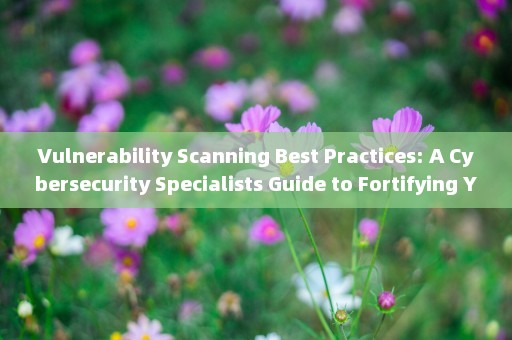As a cybersecurity specialist, I often find myself in a dimly lit room, surrounded by rows of monitors, each one displaying a stream of data. It's a scene straight out of a Hollywood hacker movie, but for me, it's just another day at the office. The data dancing across these screens represents the digital equivalent of a castle under siege, constantly bombarded by potential threats. In this ever-evolving battle, vulnerability scanning is a crucial arrow in our quiver, and today, I'm going to share some of the best practices I've learned over the years.

Understanding the Basics
Before we dive into the nitty-gritty of vulnerability scanning, let's establish a solid foundation. A vulnerability is like a chink in your digital armor, a weakness that attackers can exploit to gain unauthorized access to your systems. Vulnerability scanning is the process of systematically identifying these weaknesses, so you can patch them up before the bad guys come knocking.
My Top 5 Vulnerability Scanning Best Practices
1. Choose the Right Tools
Selecting the appropriate vulnerability scanning tools is akin to choosing the right weapons for your digital fortress. There are countless options available, each with its own strengths and weaknesses. My advice? Look for tools that offer a comprehensive scan, including:
- Network scanning: This identifies potential entry points in your network infrastructure, such as open ports and services running on them.
- Operating System (OS) scanning: It detects vulnerabilities in your OS and installed software.
- Database scanning: This focuses on vulnerabilities in your database management systems.
- Web application scanning: It identifies vulnerabilities in your web applications, which are often a prime target for attackers.
Some popular tools that cover these bases include Nessus, OpenVAS, and Qualys. Remember, the right tool for the job can make all the difference.
2. Establish a Regular Scanning Schedule
Think of vulnerability scanning as a routine check-up for your digital health. Just as you wouldn't skip annual physical exams, it's crucial to perform regular vulnerability scans. I recommend a weekly or bi-weekly schedule, depending on the size and complexity of your network. Consistency is key, as new vulnerabilities are discovered daily, and you don't want to leave your systems exposed for too long.
3. Customize Your Scans
One size does not fit all when it comes to vulnerability scanning. Each organization has unique systems, applications, and configurations, so it's essential to tailor your scans accordingly. For example, you might want to exclude certain critical systems from scanning during peak hours to minimize impact on performance. Additionally, customizing scan profiles allows you to focus on specific areas of concern, such as web applications or IoT devices.
4. Analyze and Prioritize Results
Once your vulnerability scanner spits out a report, the real work begins. It's essential to analyze the results, separating the wheat from the chaff. Focus on high-severity vulnerabilities that pose the greatest risk to your organization. Prioritize these based on the likelihood of exploitation and the potential impact on your systems.
Here's a quick tip: Use the Common Vulnerability Scoring System (CVSS) to help prioritize vulnerabilities. It provides a standardized way to rate the severity of each vulnerability, making it easier to decide where to allocate your resources.
5. Patch, Patch, Patch!
Identifying vulnerabilities is only half the battle. The other half is patching them before they're exploited. Once you've prioritized your list of vulnerabilities, develop a plan to address them promptly. This might involve applying software updates, reconfiguring systems, or even replacing hardware.
Remember, attackers are relentless, and they don't wait for you to catch your breath. According to the 2020 Verizon Data Breach Investigations Report, 81% of hacking-related breaches leveraged either stolen or weak credentials. By proactively patching vulnerabilities, you significantly reduce the risk of falling victim to such attacks.
Conclusion
As a cybersecurity specialist, I've seen firsthand the importance of vulnerability scanning in protecting our digital fortresses. By following these best practices, you can significantly reduce your organization's risk exposure and sleep a little easier at night. Remember, the battle against cyber threats is ongoing, but with the right tools and strategies, you can emerge victorious. Happy scanning!
Post a comment

Comment List